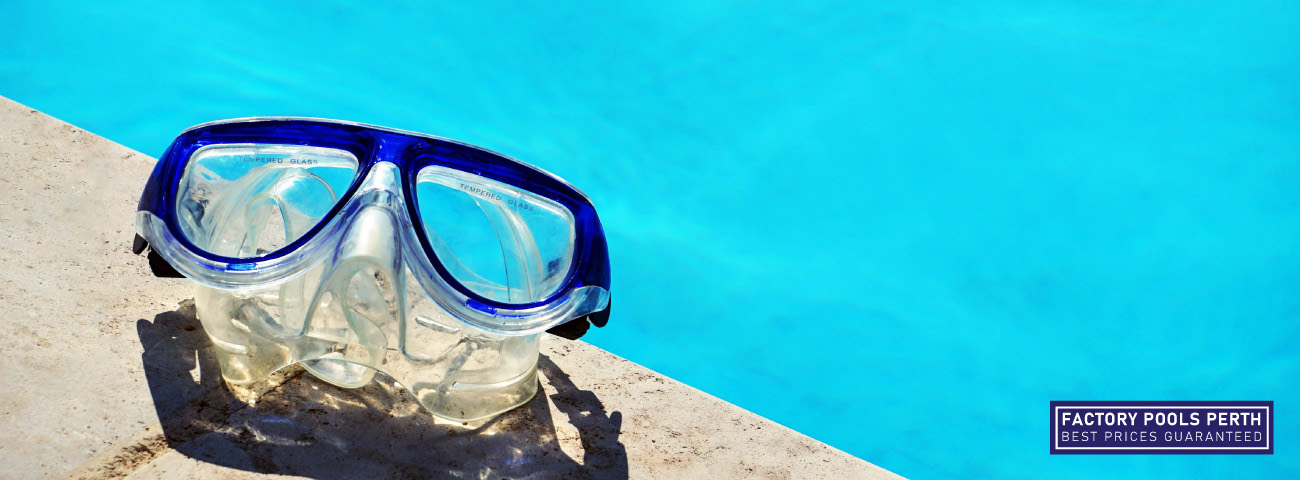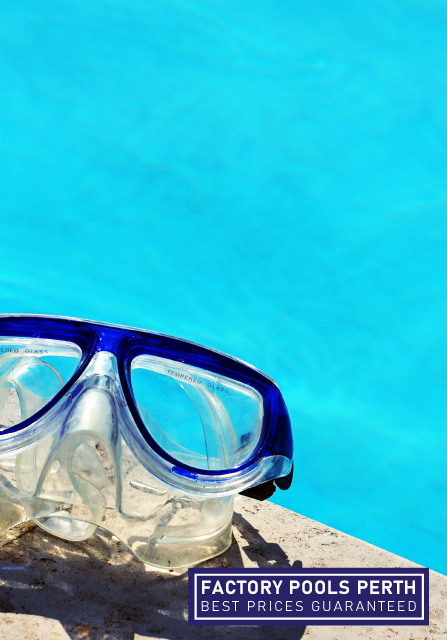How To Prevent Algae Blooms In A Pool Closed For Winter
Whether you have an above-ground pool or a fibreglass one, algae can be a problem. This is especially true if your pool is closed for the winter months. Algae blooms are caused by organic material in the water that feeds off of excess phosphates. Fortunately, there are ways for you to prevent this. Read on to learn more.

Ensure that your circulation and filtration system works properly
The first step to preventing algae blooms in a pool closed for winter is to make sure your circulation and filtration system are working properly. Here are some things you can do:
- Check the filter for leaks by removing it from its housing and exposing a section of wire mesh or other material that might be damaged. If there are holes or frays in this area, replace them with new material as soon as possible.
- Make sure that all filters are running at full capacity before re-entering your water system after winterisation or repair work has been completed. You should also check their pressure gauges (if applicable) to make sure they’re not leaking air into their tanks.
Keep your pool’s sanitiser levels within the ideal range
The sanitiser levels in your pool should be between 1-3 ppm. To measure the sanitiser level, you can use a test strip that measures the amount of chlorine or bromine present in your water. If you don’t have a test kit available, you can also use a hydrometer or refractometer to check the chemical balance in your pool water.
Use chlorine in an automatic feeder to keep the pool clean
You must use liquid chlorine or chlorine tablets for keeping your fibreglass pool clean. Use a sanitiser to disinfect your water and kill germs that cause algae blooms.
Add an active ingredient to your pool’s water by using a chlorinator, which is also known as a “chlorine generator.” This will increase the amount of chemicals available for treating algae when it starts growing again. You can purchase these at most hardware stores or online retailers.
If you use chemical tablets instead of granular tablets, make sure that each tablet contains enough poison. Also, ensure that it is tested for effectiveness against bacteria before purchase. This way, you know what kind of results you’re getting each time after adding them into your system.

Check the water chemistry twice a month
An important step in preventing algae blooms is to check the water chemistry. This can be done by testing the pH, alkalinity and calcium hardness at least twice a month.
Keep the pool covered
For this, you can use a pool cover. Clean it regularly and make sure to keep it clean by using a pool cover pump to clear debris from the water surface. Select one that has an adjustable bottom edge and comes with an integral drain plug. This way, you can easily drain off any excess water when taking off your winter cover for swim season. This process also helps keep your pool sparkling clean as well.
Perform the chlorine shock treatment occasionally
To prevent algae blooms, you can give your pool an occasional chlorine shock treatment.
To do the chlorine shock treatment, add 1 pound of liquid household bleach to every 5 gallons of water in the pool. Wait 15 minutes, and then add 2 pounds more. Repeat this process every 30 days until it’s time for winterisation.
Periodically check for algae
Check for algae in the water. If you have no pool lights on and your skimmer is not moving, it’s easy to miss algae blooms that are just beginning to form. Look at your pool light when you’re doing maintenance in order to spot any signs of early bloom.
You should also look for algae on the cover or walls of the pool. If there are any green patches growing over areas where they should be clear, this could indicate an early bloom has started. If this happens, it requires your immediate attention before it spreads throughout your entire pool system.
Check for signs of algae on steps and decks. This can occur during warmer months due to sunlight breaking down chemicals used during winterisation procedures. This will allow certain types of bacteria such as cyanobacteria, to grow unchecked within these areas.

Make sure the cover is clean
Your pool should be kept clean at all times. The most effective way to prevent algae blooms in a pool closed for winter is to keep the pool cover clean and free of dirt, debris, or other contaminants that could damage it.
You can use a brush to remove dirt and debris from the cover. If you don’t want to take on this chore yourself, hire someone who has experience cleaning covers. A good rule of thumb: if there are no holes in your pool’s filter system, there is no need for filters and there shouldn’t be much need for cleaning either.
But if you do need filters installed at some point during this process, then you should have someone else take care of them. This will save time later on down the road when it comes time for maintenance work on those same elements.
Eliminate phosphates
Phosphates are a type of nutrient that algae thrive on. They can be found in many sources, including body oils and chlorine. If you want to keep your pool clear of algae, it’s important to eliminate phosphates from the water.
There are several ways to test for phosphates in your pool:
- Test strips – These are easy-to-use tests that provide instant results. They’re available at most hardware stores or online retailers where they sell chemicals needed for winterising pools.
- Phosphate test kit – This kit includes several kits with different sensitivity levels depending on what type of equipment you have available (e.,g., pump). The kits come with instructions but may not include enough information about how much material needs to be removed from each sample. So, it’s a good idea to get help from professionals.
Conclusion
Algae blooms are common in pools, but they can be prevented. We hope this article helped you understand how it can be done. Its recommended that if you are unsure, you must hire a professional.
How To Prevent Algae Blooms In A Pool Closed For Winter
Whether you have an above-ground pool or a fibreglass one, algae can be a problem. This is especially true if your pool is closed for the winter months. Algae blooms are caused by organic material in the water that feeds off of excess phosphates. Fortunately, there are ways for you to prevent this. Read on to learn more.

Ensure that your circulation and filtration system works properly
The first step to preventing algae blooms in a pool closed for winter is to make sure your circulation and filtration system are working properly. Here are some things you can do:
- Check the filter for leaks by removing it from its housing and exposing a section of wire mesh or other material that might be damaged. If there are holes or frays in this area, replace them with new material as soon as possible.
- Make sure that all filters are running at full capacity before re-entering your water system after winterisation or repair work has been completed. You should also check their pressure gauges (if applicable) to make sure they’re not leaking air into their tanks.
Keep your pool’s sanitiser levels within the ideal range
The sanitiser levels in your pool should be between 1-3 ppm. To measure the sanitiser level, you can use a test strip that measures the amount of chlorine or bromine present in your water. If you don’t have a test kit available, you can also use a hydrometer or refractometer to check the chemical balance in your pool water.
Use chlorine in an automatic feeder to keep the pool clean
You must use liquid chlorine or chlorine tablets for keeping your fibreglass pool clean. Use a sanitiser to disinfect your water and kill germs that cause algae blooms.
Add an active ingredient to your pool’s water by using a chlorinator, which is also known as a “chlorine generator.” This will increase the amount of chemicals available for treating algae when it starts growing again. You can purchase these at most hardware stores or online retailers.
If you use chemical tablets instead of granular tablets, make sure that each tablet contains enough poison. Also, ensure that it is tested for effectiveness against bacteria before purchase. This way, you know what kind of results you’re getting each time after adding them into your system.

Check the water chemistry twice a month
An important step in preventing algae blooms is to check the water chemistry. This can be done by testing the pH, alkalinity and calcium hardness at least twice a month.
Keep the pool covered
For this, you can use a pool cover. Clean it regularly and make sure to keep it clean by using a pool cover pump to clear debris from the water surface. Select one that has an adjustable bottom edge and comes with an integral drain plug. This way, you can easily drain off any excess water when taking off your winter cover for swim season. This process also helps keep your pool sparkling clean as well.
Perform the chlorine shock treatment occasionally
To prevent algae blooms, you can give your pool an occasional chlorine shock treatment.
To do the chlorine shock treatment, add 1 pound of liquid household bleach to every 5 gallons of water in the pool. Wait 15 minutes, and then add 2 pounds more. Repeat this process every 30 days until it’s time for winterisation.
Periodically check for algae
Check for algae in the water. If you have no pool lights on and your skimmer is not moving, it’s easy to miss algae blooms that are just beginning to form. Look at your pool light when you’re doing maintenance in order to spot any signs of early bloom.
You should also look for algae on the cover or walls of the pool. If there are any green patches growing over areas where they should be clear, this could indicate an early bloom has started. If this happens, it requires your immediate attention before it spreads throughout your entire pool system.
Check for signs of algae on steps and decks. This can occur during warmer months due to sunlight breaking down chemicals used during winterisation procedures. This will allow certain types of bacteria such as cyanobacteria, to grow unchecked within these areas.

Make sure the cover is clean
Your pool should be kept clean at all times. The most effective way to prevent algae blooms in a pool closed for winter is to keep the pool cover clean and free of dirt, debris, or other contaminants that could damage it.
You can use a brush to remove dirt and debris from the cover. If you don’t want to take on this chore yourself, hire someone who has experience cleaning covers. A good rule of thumb: if there are no holes in your pool’s filter system, there is no need for filters and there shouldn’t be much need for cleaning either.
But if you do need filters installed at some point during this process, then you should have someone else take care of them. This will save time later on down the road when it comes time for maintenance work on those same elements.
Eliminate phosphates
Phosphates are a type of nutrient that algae thrive on. They can be found in many sources, including body oils and chlorine. If you want to keep your pool clear of algae, it’s important to eliminate phosphates from the water.
There are several ways to test for phosphates in your pool:
- Test strips – These are easy-to-use tests that provide instant results. They’re available at most hardware stores or online retailers where they sell chemicals needed for winterising pools.
- Phosphate test kit – This kit includes several kits with different sensitivity levels depending on what type of equipment you have available (e.,g., pump). The kits come with instructions but may not include enough information about how much material needs to be removed from each sample. So, it’s a good idea to get help from professionals.
Conclusion
Algae blooms are common in pools, but they can be prevented. We hope this article helped you understand how it can be done. Its recommended that if you are unsure, you must hire a professional.



